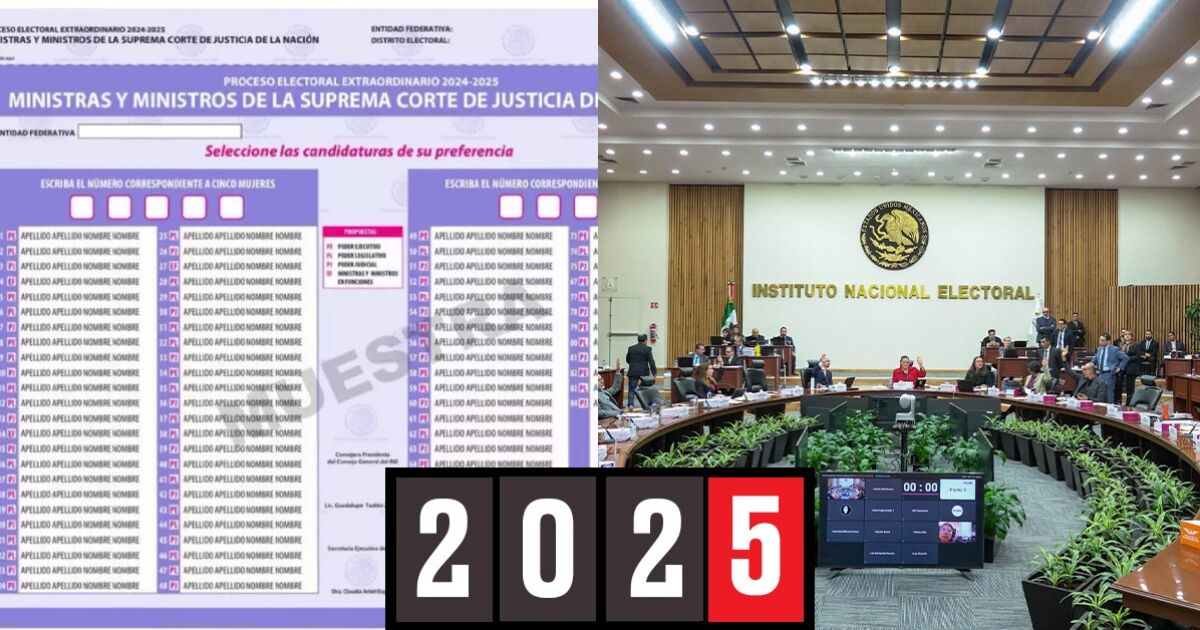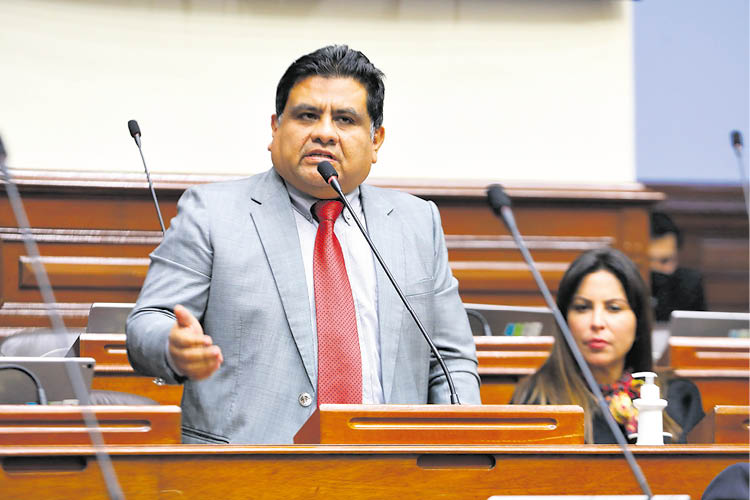That is why it is analyzed to innovate even more in the model and that this time the citizens authorized as polling station officials do not count votes at each voting station.
This given the complexity of recording the different combinations of possible votes in the minutes, for which larger stationery and mega sheets of results would be necessary where all the possibilities of votes cast are reflected.
In the new scheme, the ballot boxes would be taken to the District Councils, which is where the district counting of votes in normal elections is carried out, on the Wednesday following a vote.
It is also analyzed, for now only as a savings alternative and given the difficulty of this new election, not carrying out the Preliminary Electoral Results Program (PREP) to unofficially anticipate the names of the winners of the process and not carrying out a Quick Count, an exercise statistician that gives the results of the election with certainty and speed.
Added to these decisions is the decision not to carry out sample verification of the voter registry, despite the fact that everything as a whole has been measures applied historically to reinforce confidence in the elections.
With all these decisions, the traditional electoral model that has provided certainty to the electoral results would be substantially modified.
Abstentionism and carry
In the judicial election, it is anticipated that there will be some voting centers in which there is a concentration or lines of voters, it is foreseeable that there will be party structures that mobilize voters, or that they will spend more time voting than in a normal election.
Unofficially, it is estimated that each voter takes 40 seconds in a “normal” election; In these it may take two minutes, assuming that the vote is moderately reasoned and it is not automatic.
However, the shadow of abstentionism also hangs over the judicial electoral process, and at the same time the alert for “mobilization” of citizens, that is, carrying.
In the last federal election, in which President Claudia Sheinbaum was elected, 61.04% of citizens in LNE went to vote, less than six years before. That is, 1.9% of the voters who voted in 2018 did not come to cast their vote on this occasion.
According to Integralia, in last June’s elections electoral participation fell in 26 entities. Tabasco – considered Morena’s bastion – had a 14% lower turnout than in 2018 and in Oaxaca, Guerrero, Veracruz and Tamaulipas, all governed by that party, abstentionism also increased.
In 2021, 6.6 million citizens participated, that is, only 7.11% and an abstention rate of 92.8%, in the popular consultation on the “trial of former presidents”
In April 2022, 16.5 million voters participated in the mandate revocation consultation, that is, just 17.77%, or an abstention rate of 82.2%.
In both exercises there was wide dissemination by former president Andrés Manuel López Obrador and Morena.
Now it is prohibited for governments to broadcast or intervene in the judicial election – which was also prohibited in the consultations – but there is also an express restriction to prevent parties from interfering in the judicial election.
Despite this, experts anticipate that the design of the process, in which the Evaluation Committees of the Executive, Legislative and Judicial Branches are the ones that ultimately decide the candidates who will go to the ballot, practically makes Morena the great voter. of the judicial elections.
This is because those appointed to the Committees of the Legislative and Judicial Powers are related to the guinda party, and they will define two-thirds of the nominations for which they will vote; Therefore, in reality there will be partisan interference.
Now, in the June election, ignorance about who will be thousands of candidates will be added to the equation, at least 5,000 for the federal judicial election, which will be paid for by abstentionism, according to the consulting firm Integralia, specialized in electoral issues and political risk.
“It will be an election without certainty, with little participation, with few people. Election with few people, because there will be few polling stations, because people will not know what they are choosing, because there will be little promotion of the vote,” anticipated the director of Integralia and electoral expert Luis Carlos Ugalde, in an interview for Radio Formula on December 21.
“Less than 10% could go to the polls and it will not be an informed vote,” according to the former president of the Federal Electoral Institute (IFE).
Throughout the country, to elect nine ministers there will be, it is estimated, 81 to 92 candidates. To elect five members of the TDJ there would be 45 standard bearers. For a judge from the Superior Chamber of the TEPJF and three from the Regional Chamber there will be about 40 candidates.
If, as everything indicates, the election of local Judiciary positions takes place in the country’s capital, there could be another four ballots, or ten in total, in the best scenario.
For judges and magistrates in Mexico City there would be another 30 candidates. Thus, for a voter in the capital it would imply knowing at least the 20 candidates they will support, and finding out about the 200 candidates from whom they will discern their votes.
“Being frank. Who is going to know more than three or four names? Therefore, it is going to be de-tin-marín, de tin-marín. And since the majority (of the people) are going to be mobilized by parties, by governors, many people are going to arrive with a piece of paper where they will say who to vote for for each position,” Ugalde anticipated.
“The challenge will be impossible to meet: high voting with informed voting. The participation will be less than 10% and it will not be an informed vote,” he anticipated.
This outlook seems optimistic because it could be worse: the problem of budget cuts, austerity, abstentionism and carryover can be replicated in the judicial elections of the country’s entities.
For example, to continue with the case of the capital, of 990 million pesos requested by the Electoral Institute of the capital (IECDMX) for the election of local judicial positions, the city Congress applied a cut and reduced it at least 300 millions of pesos.
Local councilors will have to cut programs and make adjustments to move forward with the local judicial election.
With the addition that there will apparently not be only four extra ballots: the IECDMX advisor, Ernesto Ramos, stated in an interview that they must elect at least 25% of the judges and 40% of the magistrates, that is, there will not only be four in total.
He also revealed that Talleres Graphicos de México, with which the Institute has signed an agreement, has already reported to them that it does not have a security role for the local election.
“There is not enough security paper at this time to be able to print the ballots” so the IECDMX will have to decide what to do, whether to use another paper with fewer security measures, or turn to another supplier.
It is added that “the calculations are going to be very complex” and that is why the INE is considering not doing PREP so it will have to innovate the methods for counting votes and the same will happen in the city, declared local councilor Patricia Avendaño.















